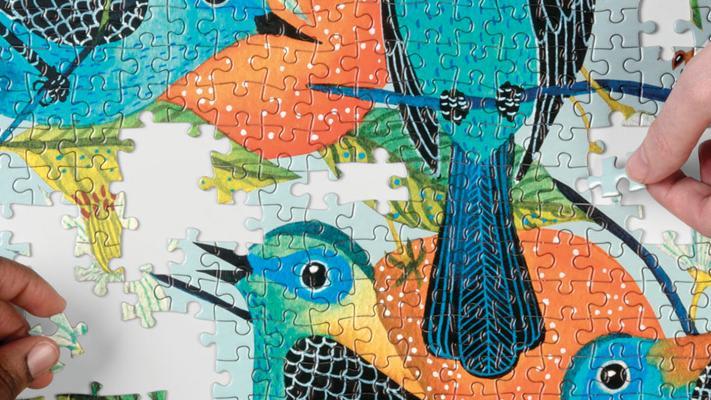Learning How to Learn Part I
25 Jan 2020“I don’t know what’s the matter with people: they don’t learn by understanding, they learn by some other way - by rote or something. Their knowledge is so fragile!” – Richard P. Feynman

Happy Chinese New Year! Two major points about learning in this article:
- How learning happens
- How to promote better learning
Learning is like solving a puzzle map. Every time we learn a new concept, we pick up a puzzle piece. And every time we make a connection, we fit that puzzle piece into our map.
It is the ability to recall and tie relevant concepts together, and the ability to derive new solutions under different situations.
How Learning Occurs
A Model of the Brain:
Our brain is divided between working and long-term memory. Like the two hands we have while trying to solve the puzzle map, our working memory can only juggle so many concepts at a time. Sometimes we might want to free our hands to try a different puzzle resting in our long-term memory box. And sometimes, when we fit the two puzzles together, we are one step closer to seeing the bigger picture, and we free up one of our hands to take another puzzle.
Learning Techniques:
1) Our brain is terrible at remembering abstract ideas, so we’ll want to find relationships, metaphors, or analogies to help promote new connections
- Learn with a goal/question in mind by glossing over the big picture (table of content) to understand how your reading fits in
- Leverage our auditory and spatial senses (see: memory palace)
- Maybe by imaging yourself in the concept’s shoes, ie: how our brain is like a computer
2) Repeated testing/recall (aka: avoiding the illusion of competence)
- Teaching or blogging the material to someone else without aid (kinda like this article)
- Making a set of flashcards to test yourself while on the go
- Interleave your tests with different solution approaches so you don’t just memorize steps
Learning Modes:
1) Focused mode, remove all distractions that can take up value space in your limited working memory
- You are tunnel vision with a narrow frame of thinking, with predictable thought pattern.
2) Diffused mode, like a post-workout burn, your subconscious brain continues to organize the recently loaded material from focused mode
- Your thought pattern tends to wanders more, giving you new perspectives, so you don’t get stuck in a local minima
- Go for a run
Chunking – Finding Puzzle Pieces
Chunking is when we take all the details in our working memory and tie it together to form a larger understanding. Like a puzzle map, when we initially chunk, we pick up a puzzle piece. And as we find more puzzle pieces, we start to notice a pattern and how they can fit together, producing a bigger puzzle piece with more connecting edges. It’s chunking that At times, we can take apart of the puzzle pieces to look at the details, or stand back and admire the bigger puzzle.
For part II, click here.
Reference: https://www.coursera.org/learn/learning-how-to-learn